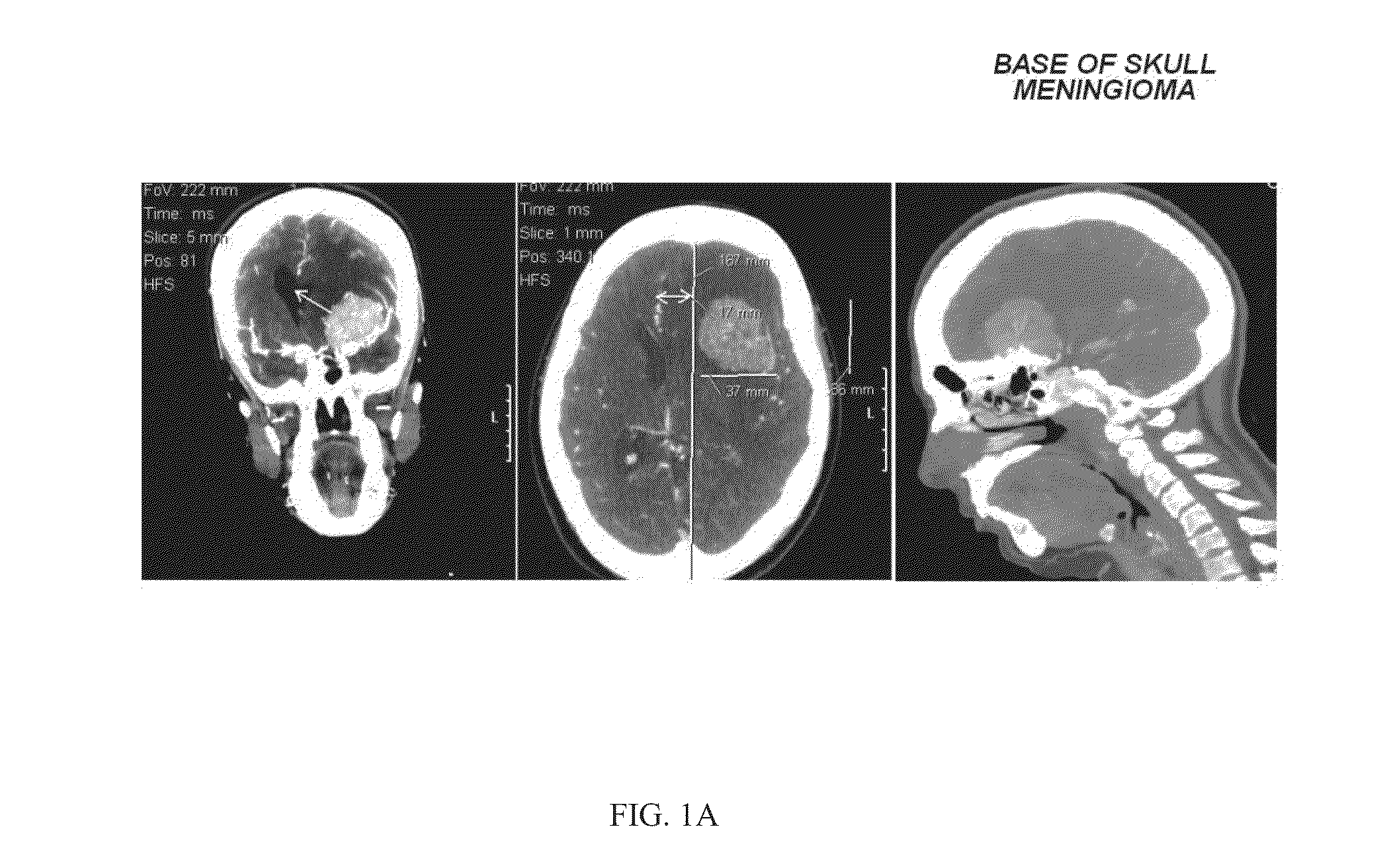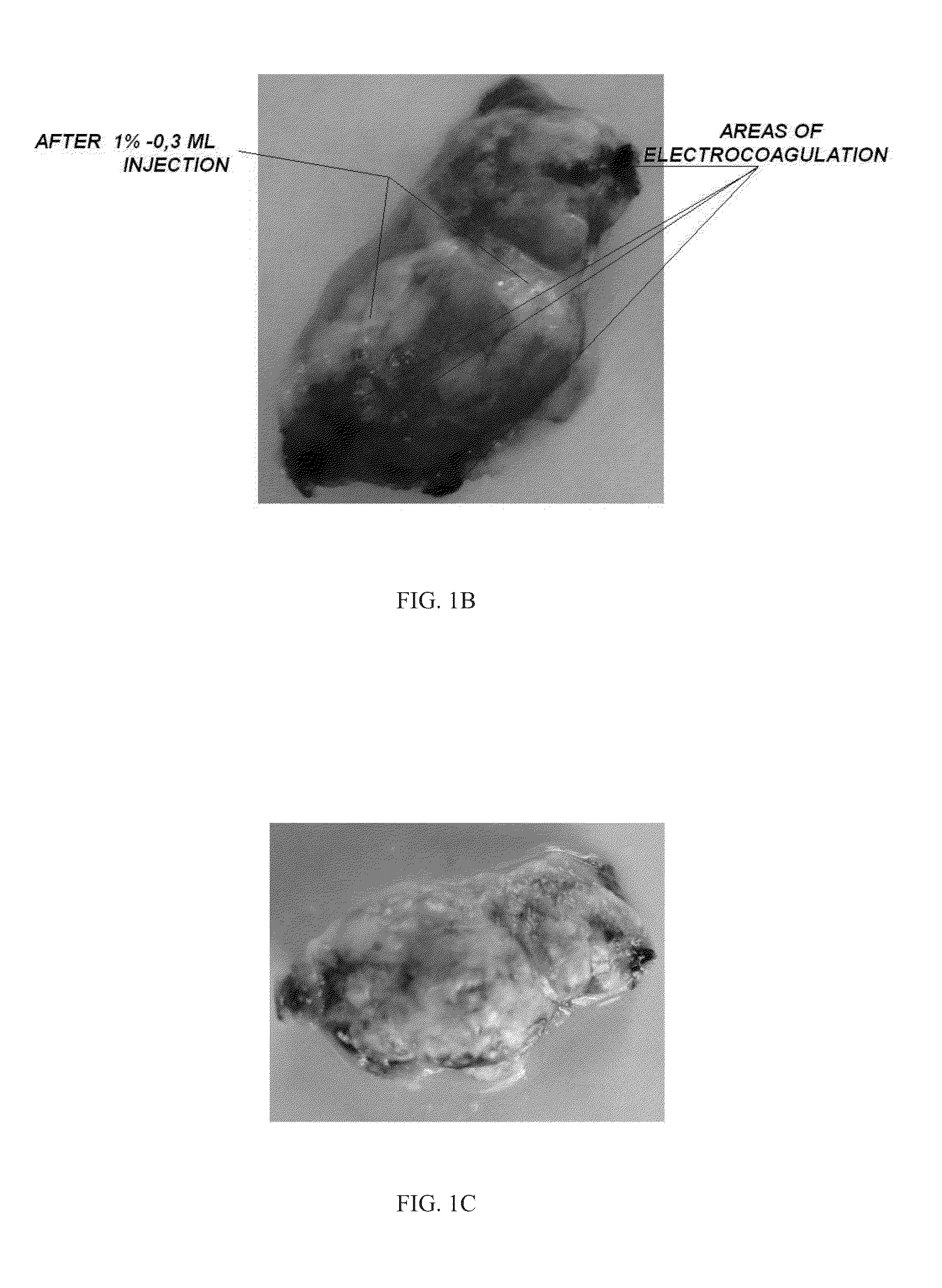Halogenated aliphatic carboxylic acids, oligomers and/or polymers thereof and their use in devitalizing external and internal neoplasms
a technology of halogenated aliphatic carboxylic acids and oligomers, which is applied in the direction of plant growth regulators, biocide, animal husbandry, etc., can solve the problems of neoplastic growth (neoplasia), limited radiotherapy effect, and limited chemotherapy effect, so as to avoid distant metastases, reduce the spread of malignant cells, and reduce the effect of neoplastic growth
- Summary
- Abstract
- Description
- Claims
- Application Information
AI Technical Summary
Benefits of technology
Problems solved by technology
Method used
Image
Examples
example 1
The Therapeutic Effect of DPA in Treating Various Skin Pathologies
[0418]Protocol:
[0419]6938 patients suffering from various skin pathologies, from different clinics, hospitals and private practices were recruited prospectively, and treated with DPA or an oligomer thereof synthesized as described hereinabove, under a common approved protocol.
[0420]Patients suffering from benign tumors, viral warts or mucosal membraneus tumors were administered with the tetramer form of DPA. In some cases, DPA, as a monomer, was used. Patients suffering from premalignant or malignant tumors were administered with longer oligomers of DPA.
[0421]In most cases, the DPA monomer or oligomer was administered only once and without anesthesia or other special conditions. Only in cases of patients suffering from Recklinghausen disease (a multiple form of peripheral Neurofibromatosis), when the number of skin tumor lesions was more than 100, multiple treatment sessions were performed.
[0422]Biopsy specimens of th...
example 2
Toxicology and Immunology Studies in Rats
[0443]Studies were conducted in order to evaluate the effect of administration of DPA or a DPA oligomer to rats. 1% and 0.1% (by weight) of a solution of DPA or an oligomer thereof were used, and the solution was administered daily for several days. The obtained data (not shown) showed that none of the rats demonstrated morphological changes in any of the tissues that are responsible for immunological responses nor were there abnormalities in the generation of IgM expressed as CPP-Ig million after several days of daily use of the tested solution.
example 3
The Therapeutic Effect of DPA in Treating Various Skin Pathologies
[0444]In additional clinical trials, patients suffering from various skin pathologies were recruited, and treated with DPA or an oligomer thereof synthesized as described hereinabove, under a common approved protocol.
[0445]Patients suffering from benign, pre-malignant and malignant tumors, viral warts or mucosal membraneus tumors were administered with the tetramer form of DPA. In some cases, DPA, as a monomer, was used.
[0446]In most cases, the DPA monomer or oligomer was administered only once and without anesthesia or other special conditions.
[0447]The safety and efficacy of DPA oligomer treatment was assessed by evaluating the treated skin lesion appearance, local skin reaction, vital sign measurements, adverse events and concomitant medications taken by the patient.
Inclusion criteria were as follows:
[0448]Sufficiently educated patients, suffering from various superficial skin pathologies, as described in detail he...
PUM
| Property | Measurement | Unit |
|---|---|---|
| diameter | aaaaa | aaaaa |
| boiling point | aaaaa | aaaaa |
| melting point | aaaaa | aaaaa |
Abstract
Description
Claims
Application Information
 Login to View More
Login to View More - R&D
- Intellectual Property
- Life Sciences
- Materials
- Tech Scout
- Unparalleled Data Quality
- Higher Quality Content
- 60% Fewer Hallucinations
Browse by: Latest US Patents, China's latest patents, Technical Efficacy Thesaurus, Application Domain, Technology Topic, Popular Technical Reports.
© 2025 PatSnap. All rights reserved.Legal|Privacy policy|Modern Slavery Act Transparency Statement|Sitemap|About US| Contact US: help@patsnap.com



